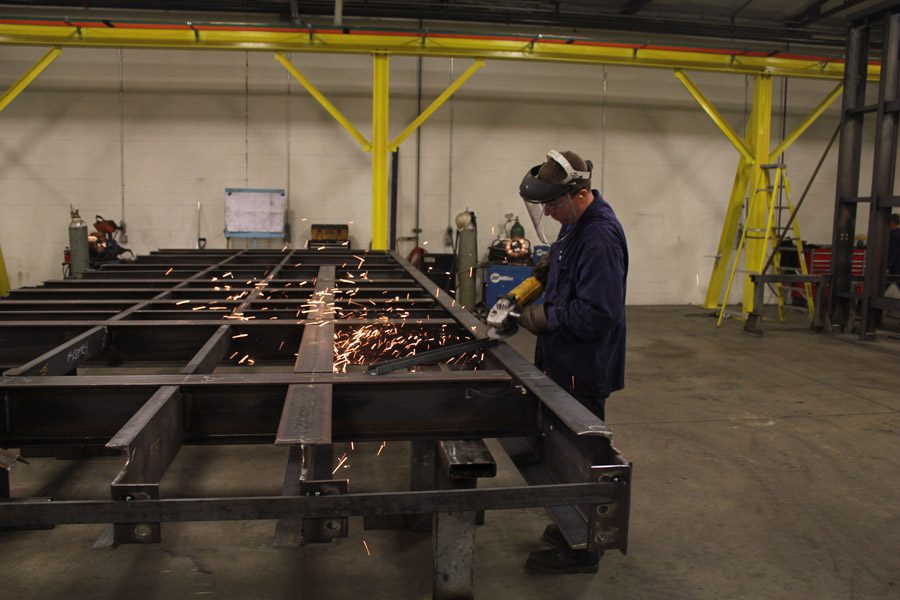The Most Common Materials Used in Metal Fabrication

Methods for metal fabrication range in complexity with respect to the desired qualities of the end product and the composition of the materials in use. Strength, conductivity, hardness and resistance to corrosion are all commonly desired properties. Through varying techniques in cutting, bending and welding, these metals can be used in a variety of products ranging from appliances and toys, to larger structures like furnaces, duct-work and heavy machinery.
- Iron is a chemical element, and the most common on earth in terms of mass. It is abundant and essential for the production of steel.
- Steel is an alloy of iron and carbon, which typically includes a mix of iron ore, coal, limestone and other elements. It is the most common steel utilized in metal fabrication, and has an almost endless list of uses from construction materials to machinery and weaponry.
- Carbon Steel can be fabricated to a variety of hardness levels depending greatly on the amount of carbon used. As the quantity of carbon rises the strength of the steel increases but the ductility, malleability and melting point of the material decreases.
- Stainless Steel is composed of carbon steel, aluminum, chromium and other elements that combine to form a highly corrosion-resistant metal. Stainless steel is known for its distinctive polished silver mirror coating. It is lustrous, brittle and does not tarnish in air. The myriad applications of stainless steel include surgical instruments, cookware, appliances, metal ceramics, cabinet fittings and collectibles.
- Copper is an impeccable conductor of electricity. It is tough, ductile, malleable and resistant to corrosion in many atmospheres, which makes it useful in marine and industrial environments.
- Bronze is a copper alloy that has have been in use since around 3500 BC. It is stronger than copper, heavier than steel and features a low melting point. Bronze has been used in the manufacture of coins, weapons, armor, cookware and turbines.
- Brass is composed of copper and zinc. It is often used for nuts, bolts, pipe fitting, door knobs, furniture trim, clock components and much more. Its acoustic properties makes it an ideal alloy for casting musical instruments.
- Aluminum is lightweight, durable and versatile with good thermal and electrical conductivity. Aluminum does not perform well at temperatures higher than 400 degrees Fahrenheit, but excels at subzero temperatures, making it ideal for low-temperature applications like refrigeration and aeronautics.
- Magnesium is the lightest structural metal. Its low density makes it ideal when strength is not overly important but stiffness is required. Magnesium is used for aircraft housings, automobile parts, and elements of rapidly rotating machines.error
No matter what your requirements might be for your particular application, Swanton Welding will find the perfect metal for your project. 60 years has allowed us to grow with the industry, utilizing different wires, gases and processes to hone our process. From stick electrode welding to today’s most modern methods Swanton Welding has stayed in touch with every innovation to bring you the very best welding and fabrication services possible.s health care, aeronautics and automobile have made the fabrication of metals a precise science, often requiring adherence to exact measurements. When you order fabricated metal structures, the appropriate metals are then cut, bent or assembled to suit your needs. Whether you require parts with corrosion resistance, enhanced strength or a silvery polish, there is a common metal and fabrication process to suit your specifications.

